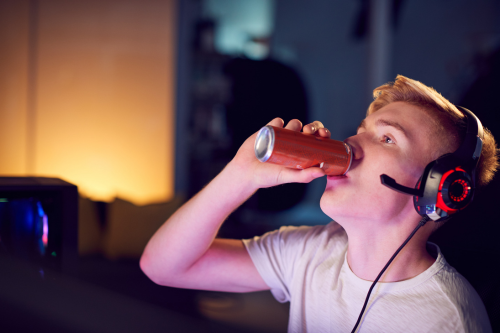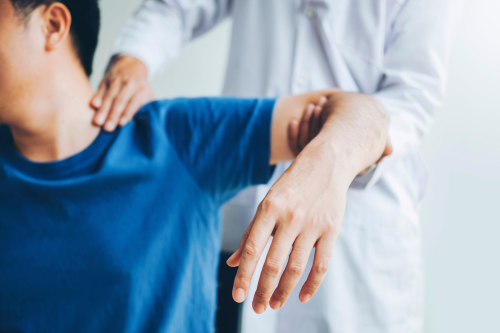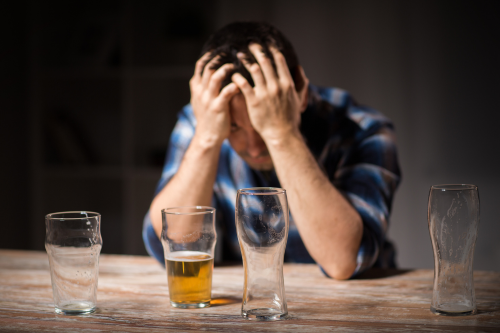What is the Number One Drug Used by Teens
Teen drug abuse is a serious public health concern, with far-reaching consequences for both individuals and society as a whole. While the landscape of substance use is constantly evolving, one drug consistently stands out as the most prevalent among adolescents: alcohol. However, the issue extends beyond alcohol, encompassing a wide range of substance abuse that teens are experimenting with.
This comprehensive blog post will delve into the world of what teens abuse, exploring the prevalence of alcohol, prescription medications, and other drugs among adolescents. We will examine the factors contributing to drug abuse, discuss the consequences of teen drug use, and offer insights into prevention and intervention strategies.

Alcohol: The Leading Culprit in Teen Drug Abuse
The most widely used drug by young adults, despite its legal restrictions for those under 21, is not an illicit substance like cocaine or heroin, but rather alcohol. This surprising fact often goes unnoticed due to the social acceptance and prevalence of alcohol in many cultures. However, alcohol’s legality does not diminish its potential for harm, particularly among young adults whose brains and bodies are still developing.
Alarming Statistics: Alcohol Use Among Teens
The statistics surrounding teen alcohol use are sobering. According to the National Institute on Alcohol Abuse and Alcoholism (NIAAA), a significant percentage of high school students have reported drinking alcohol within the past month, with a substantial proportion engaging in binge drinking, consuming multiple drinks in a short period. These numbers indicate that alcohol is not merely a substance of occasional experimentation for teens but a widespread and concerning issue.
Reasons Behind Alcohol’s Popularity Among Teens
Several factors contribute to alcohol’s widespread use among adolescents:
- Accessibility: Alcohol is readily available in many households and can be easily obtained through older siblings, friends, or even parents. This ease of access makes it a convenient and tempting option for teens seeking a quick way to alter their mood or fit in with peers.
- Social Acceptability: Alcohol consumption is often normalized and even glamorized in popular culture, movies, and social media. This can lead teens to perceive alcohol as a harmless and socially acceptable way to have fun or relieve stress.
- Peer Pressure: The desire to fit in with peers and conform to social norms can be a powerful motivator for teen drinking. Young people may feel pressured to drink alcohol to avoid being ostracized or labeled as “uncool.”
- Stress and Emotional Issues: Adolescence can be a tumultuous time filled with stress, anxiety, and emotional turmoil. Some teens may turn to alcohol as a way to self-medicate and numb their emotional pain, unaware of the potential long-term consequences.
- Curiosity and Experimentation: Adolescence is a period of exploration and experimentation, and some teens may be curious about the effects of alcohol or view it as a rite of passage into adulthood. This curiosity, coupled with a sense of invincibility, can lead to risky behavior and alcohol abuse.
The Dangers of Teen Alcohol Use: A Sobering Reality
While alcohol may seem like a harmless indulgence, its impact on the developing teenage brain and body can be severe and long-lasting. Some of the risks and consequences of a young adults alcohol use include:
- Impaired Brain Development: Alcohol can interfere with the development of the adolescent brain, leading to problems with learning, memory, attention, and decision-making. This can have a profound impact on academic performance and future success.
- Physical Health Risks: Alcohol can damage the liver, heart, and other organs, even in young people. Excessive alcohol use can lead to alcohol poisoning, a life-threatening condition.
- Mental Health Problems: Alcohol abuse can worsen existing mental health conditions, such as depression and anxiety, and increase the risk of developing new ones.
- Risky Behaviors: Teenagers who drink alcohol are more likely to engage in risky behaviors, such as unprotected sex, drunk driving, and violence. These behaviors can have serious consequences for both the individual and others.
-
Addiction: Early alcohol use significantly increases the risk of developing alcohol use disorder (AUD) later in life. AUD is a chronic relapsing disease characterized by compulsive alcohol seeking and use despite harmful consequences.

Prescription Medications: The Hidden Epidemic in Teen Drug Abuse
While alcohol maintains its position as the most common drugs used among teenagers, the abuse of prescription medication has emerged as a growing and alarming trend. These medications, often readily available in households and easily accessible through various channels, have become a significant contributor to the epidemic of teen drug abuse.
The Prevalence of Prescription Drug Misuse Among Teens
Recent studies have revealed a disturbing trend: a significant percentage of teenagers have misused prescription medications in the past year. These common drugs, originally intended for legitimate medical purposes, are being diverted and abused by young people for non-medical reasons. The National Institute on Drug Abuse (NIDA) reports that prescription medication, especially opioids, stimulants, and depressants, are among the most commonly abused drugs by adolescents.
Commonly Abused Prescription Medication
Three classes of prescription drugs are particularly prone to misuse among teens:
- Opioids: Powerful painkillers like OxyContin, Vicodin, and Percocet are highly addictive and carry a significant risk of overdose and death. Teens may abuse opioids to experience a euphoric high or to self-medicate for emotional pain or physical discomfort.
- Stimulants: Prescription stimulants such as Adderall and Ritalin, often referred to as “study drugs,” are misused by some teens to enhance academic performance or achieve a sense of heightened focus and energy. However, their abuse can lead to addiction, anxiety, insomnia, and other adverse health effects.
- Depressants: Benzodiazepines like Xanax and Valium are sometimes abused by teens to manage anxiety or sleep problems. However, these drugs are highly addictive and can be dangerous when combined with other substances like alcohol.
The Dark Side of Teen Prescription Drug Abuse
The consequences of abusing prescription medications can be devastating for teenagers and their families.
- Addiction: Prescription drugs can be highly addictive, leading to physical and psychological dependence. When teens become addicted, they may experience withdrawal symptoms when they try to stop using, perpetuating the cycle of abuse.
- Overdose: Misuse of prescription medications, particularly opioids, carries a high risk of overdose, which can be fatal. Teens may underestimate the potency of these drugs or combine them with other substances, increasing the risk of overdose.
- Mental Health Deterioration: The abuse of prescription drugs can exacerbate existing mental health disorders like depression and anxiety, or trigger new ones. This can create a dangerous cycle, as individuals may turn to drugs to cope with their worsening mental health, further fueling their addiction.
-
Academic and Social Impairment: Prescription drug abuse can have a detrimental impact on a teen’s academic performance, social relationships, and overall well-being. It can lead to declining grades, absenteeism, isolation from friends and family, and a loss of interest in activities they once enjoyed.

Illicit Drugs: A Dangerous Trend Among Teens
While alcohol and prescription medications are the most prevalent substances used by teens, the allure of illicit drugs remains a significant concern. The use of drugs like marijuana, cocaine, and heroin, though often shrouded in secrecy, poses a significant threat to the health and well-being of young people.
The Prevalence of Illicit Drug Use Among Teens
Despite concerted efforts to curb drug use, illicit substances continue to find their way into the hands of adolescents. Recent studies have revealed that a substantial percentage of high school students have experimented with marijuana, making it the most commonly used illegal drug among this age group. Additionally, a smaller, but still concerning, percentage of young adults have reported using other illicit substances like cocaine, heroin, inhalants, or hallucinogens.
Factors Fueling Teen Illicit Drug Use
Several factors contribute to the persistence of abusing drugs among young adults:
- Curiosity and Experimentation: Adolescence is a time of exploration and risk-taking, and some teens may be tempted to experiment with illegal drugs out of curiosity or a desire to rebel against authority.
- Peer Pressure: The desire to fit in with peers and gain social acceptance can be a powerful motivator for teen drug use. Social circles where illegal drug use is prevalent can normalize the behavior and make it seem less risky.
- Mental Health Issues: Teens struggling with mental health conditions like depression, anxiety, or trauma may turn to illicit drugs as a way to self-medicate or escape their emotional pain.
- Family History of Substance Abuse: Teens with a family history of substance abuse may be at higher risk for experimenting with and becoming addicted to illicit drugs. This could be due to genetic predisposition, environmental factors, or a combination of both.
Consequences of Teen Illicit Drug Use: A Bleak Reality
The consequences of teen illicit drug use can be severe and long-lasting, impacting their physical and mental health, academic performance, and social relationships. Some of the potential consequences include:
- Addiction: Many illicit drugs are highly addictive, leading to physical and psychological dependence. Teens who become addicted may experience withdrawal symptoms when they try to quit, making it difficult to break free from the cycle of abuse.
- Overdose: Illicit drug use, particularly of opioids like heroin, carries a high risk of overdose, which can be fatal. The potency and purity of street drugs can vary widely, making it difficult for users to gauge safe dosages.
- Legal Consequences: Possession or use of illicit drugs is illegal and can lead to arrest, criminal charges, and a permanent record. This can have long-term consequences for a teen’s future, limiting their educational and career opportunities.
- Academic and Social Impairment: Illicit drug use can interfere with cognitive function, memory, and concentration, hindering academic performance. It can also lead to social isolation, strained relationships with family and friends, and a loss of interest in activities they once enjoyed.
- Mental Health Disorders: Illicit drug use can worsen existing mental health conditions or trigger new ones. This can lead to a downward spiral, as individuals may turn to drugs to cope with their worsening mental health, further fueling their addiction.
-
Physical Health Problems: Illicit drug use can have a wide range of adverse health effects, depending on the specific substance. These can include cardiovascular problems, respiratory issues, infections, and organ damage.

Factors Contributing to Teen Drug Abuse
Teen substance abuse is a multifaceted issue influenced by a complex interplay of biological, psychological, social, and environmental factors. Understanding these contributing factors is crucial for developing effective prevention and intervention strategies.
Peer Pressure: The Allure of Conformity
Adolescents are particularly vulnerable to peer pressure, and the desire to fit in or be accepted can be a powerful motivator for experimenting with drugs. When substances are prevalent in a teen’s social circle, the fear of being ostracized or labeled as different can lead to risky behaviors. The pressure to conform, coupled with a natural inclination for risk-taking and experimentation, can create a dangerous combination.
Mental Health Issues: Seeking Solace in Substances
Mental health challenges, such as depression, anxiety, and stress, are common among adolescents. Unfortunately, many teens lack the coping skills or resources to manage these issues effectively. In an attempt to self-medicate or numb their emotional pain, they may turn to drugs as a temporary escape. This can lead to a vicious cycle, as substance abuse can worsen existing mental health conditions and create new ones, further fueling the need for drugs.
Family History and Genetics: The Inherited Risk
Genetics plays a significant role in addiction vulnerability. Teens with a family history of substance abuse are at a higher risk of developing a substance use disorder. This is due to a combination of genetic predisposition and environmental factors. Growing up in a household where substance use is normalized or tolerated can expose children to the dangers of drug abuse from a young age, increasing their likelihood of experimentation and dependence.
Trauma and Adverse Childhood Experiences: The Scars That Linger
Traumatic experiences, such as physical or emotional abuse, neglect, or witnessing violence, can have a profound impact on a young person’s mental and emotional well-being. Trauma can leave deep psychological scars, making individuals more vulnerable to substance abuse as a coping mechanism. Drugs can offer a temporary escape from the pain and anxiety associated with trauma, but they ultimately hinder the healing process and exacerbate existing problems.
Environmental Factors: The Role of Accessibility and Exposure
The availability and accessibility of drugs in a teen’s environment can significantly influence their likelihood of experimentation and abuse. Living in a community or attending a school where drug use is prevalent can normalize the behavior and make it seem less risky. Additionally, exposure to media that glamorizes drug use can create a distorted perception of reality and make drugs appear more appealing.
The Illusion of Control and Invincibility: Underestimating the Risks
Adolescence is a time of rapid brain development, and the prefrontal cortex, responsible for decision-making and impulse control, is still maturing. This can lead to impulsive behaviors and an underestimation of the potential risks associated with drug use. Teens may believe that they are immune to the negative consequences of addiction or that they can control their use, making them more likely to experiment and engage in risky behaviors.

Prevention and Intervention Strategies for Teen Drug Abuse: A Holistic Approach
Addressing the complex issue of teen drug abuse requires a multi-pronged approach that encompasses prevention, early intervention, treatment, and ongoing support. By focusing on education, mental health, family involvement, and community resources, we can empower young people to make healthy choices and overcome the challenges of addiction.
Prevention: Empowering Teens with Knowledge and Support
- Education: Equipping teens with accurate information about the risks and consequences of drug abuse is crucial. Comprehensive drug education programs in schools can raise awareness, dispel myths, and teach teens about the harmful effects of drugs on their physical and mental health. These programs should also emphasize healthy coping mechanisms for stress and emotional distress.
- Early Intervention: Identifying and addressing early signs of drug use can prevent the problem from escalating into addiction. Parents, teachers, and healthcare providers should be vigilant in observing changes in behavior, academic performance, or social interactions that may indicate drug use. Early intervention programs can provide teens with the support and resources they need to address underlying issues and avoid further drug use.
- Family Involvement: Family support plays a pivotal role in a teen’s recovery from drug abuse. Open communication, understanding, and involvement in the treatment process can significantly enhance the chances of success. Family therapy sessions can help address family dynamics, communication patterns, and any underlying issues that may contribute to drug use. Parents and family members can also learn strategies to support their teen’s sobriety and create a safe and nurturing home environment.
- Mental Health Support: Addressing underlying mental health issues is often essential for treating teen drug abuse. Many teens turn to drugs as a way to self-medicate for conditions like depression, anxiety, or trauma. Integrating mental health services into addiction treatment programs can help teens address these co-occurring disorders and develop healthy coping mechanisms.
- Community Resources: Utilizing community resources, such as support groups, counseling services, and after-school programs, can provide teens with additional support and guidance. These resources can offer a safe space for teens to connect with others who understand their struggles, learn new skills, and build a strong support network.
Intervention and Treatment: A Comprehensive Approach
When prevention efforts fall short, effective intervention and treatment are crucial.
Assessment and Referral: Teens struggling with drug abuse should be assessed by a healthcare professional to determine the severity of their addiction and the appropriate level of care. They may be referred to outpatient or residential treatment programs, depending on their individual needs.
Outpatient Drug Rehab: Outpatient programs offer therapy, counseling, and support services while allowing teens to live at home. This option can be suitable for those with mild to moderate substance use disorders who have a stable home environment and strong support system.
Residential Treatment (Rehab): Residential treatment programs provide a structured and supportive environment where teens can focus on their recovery without the distractions and temptations of their everyday lives. These programs typically offer a combination of individual and group therapy, family counseling, medication management, and life skills training.
Medication-Assisted Treatment (MAT): In some cases, medication may be used to manage withdrawal symptoms, reduce cravings, or treat co-occurring mental health disorders. MAT is often used in conjunction with therapy and counseling for a comprehensive approach to addiction treatment.
Family Therapy: Family therapy sessions are a crucial component of teen rehab, as family involvement is essential for a teen’s recovery. These sessions can help family members understand addiction, address enabling behaviors, improve communication, and build a supportive environment for the teen’s recovery.
Individual and Group Therapy: Individual therapy provides a safe space for teens to explore the underlying causes of their drug use, develop healthy coping mechanisms, and learn relapse prevention strategies. Group therapy allows teens to connect with others who share similar struggles, offer support to one another, and learn from each other’s experiences.
Aftercare Planning: Aftercare planning is a critical component of the recovery process, ensuring that teens have the necessary support and resources to maintain sobriety after leaving rehab. This may include continued therapy, support groups, sober living arrangements, or other aftercare services.
By implementing a comprehensive and multi-faceted approach to prevention and intervention, we can effectively address the complex issue of teen drug abuse. Through education, early intervention, family involvement, mental health support, and community resources, we can empower young people to make healthy choices, overcome addiction, and build a brighter future.
Conclusion
Teen drug abuse is a complex issue with no easy solutions. However, by understanding the factors contributing to drug use, recognizing the signs of a problem, and implementing effective prevention and intervention strategies, we can help young people make healthy choices and avoid the devastating consequences of addiction.
If you or someone you know is struggling with substance abuse, please seek help. There are many resources available to support you on the road to recovery. Remember, addiction is a disease, not a moral failing, and seeking help is a sign of strength.
Seeking Treatment? We Can Help!
We work with PPO Out of Network Health Insurance Policies
If you or a loved one are struggling with mental health challenges or substance abuse, reach out to Mountain Sky Recovery today. Our team of compassionate professionals is here to support your journey towards lasting well-being. Give us a call at 951-877-5868.
FAQs For What is the number one drug used by teens?
What are the long-term effects of teen alcohol use on brain development?
Teen alcohol use can lead to impaired brain development, affecting learning, memory, attention, and decision-making abilities, potentially impacting future academic and professional success.
How can parents recognize the signs of prescription medication abuse in teens?
Signs of prescription medication abuse in teens include changes in behavior, academic performance, social interactions, and physical health, such as drowsiness, confusion, or unexplained injuries.
What are the legal consequences for teens caught using illicit drugs?
Teens caught using illicit drugs can face legal consequences such as arrest, criminal charges, and a permanent record, which can limit future educational and career opportunities.
How does peer pressure influence teen drug abuse, and what can be done to mitigate it?
Peer pressure can strongly influence teen drug abuse by creating a desire to fit in or be accepted. Mitigation strategies include fostering open communication, building self-esteem, and educating teens about the risks and consequences of drug use.




